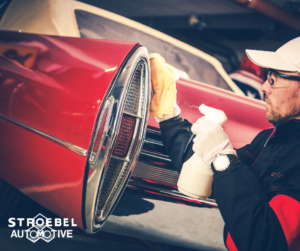Storing your car for the winter requires preparation to ensure it stays in good condition while it’s not in use. Here’s a checklist of what you should do before storing your car for the winter:
1. Clean the Car Inside and Out
Exterior: Wash the car thoroughly to remove dirt, road salt, and grime that can cause rust and damage.
Wax the Car: Apply a coat of wax to protect the paint from moisture and prevent corrosion.
Interior: Vacuum and clean the interior to remove food crumbs and debris that could attract pests.
2. Change the Oil and Filter
Old oil can contain contaminants that can damage the engine if left sitting for months. Fresh oil will help protect the engine parts during storage.
3. Fill the Gas Tank
Fill the gas tank to prevent moisture from accumulating inside, which can lead to rust and condensation.
Add Fuel Stabilizer: A fuel stabilizer prevents the gasoline from degrading and damaging the fuel system.
4. Protect the Battery
Disconnect the Battery: Disconnect the negative terminal to prevent the battery from draining while the car is in storage. Use a Battery Tender/Trickle Charger: If possible, use a battery tender to keep the battery charged over time.
5. Inflate Tires to the Proper Pressure
Tires can develop flat spots if they sit for too long. To avoid this, inflate them to the manufacturer’s recommended pressure. Consider Using Tire Cradles or Jack Stands: For extended storage, using tire cradles or placing the car on jack stands can prevent flat spots.
6. Check and Top Off Fluids
Check and top off essential fluids like coolant, brake fluid, and windshield washer fluid. Antifreeze: Ensure that the antifreeze is at the correct level and concentration to prevent freezing and damage to the engine.
7. Protect Against Rodents and Pests
Place mothballs, peppermint oil, and rodent repellents in the car and engine bay to deter pests and plants around. Seal any entry points to the vehicle (exhaust pipe, air intake) with steel wool or breathable covers to prevent animals from getting inside.
8. Use a Car Cover
If storing the car indoors, a breathable car cover will protect the vehicle from dust and debris. A weatherproof cover can protect the car from snow, rain, and sun when it is stored outdoors.
9. Engage the Parking Brake or Use Wheel Chocks
Avoid leaving the parking brake engaged for extended periods, as the pads could fuse to the rotors. Instead, use wheel chocks to keep the car from moving.
10. Ensure Proper Ventilation (if Stored Indoors)
If storing in a garage, crack a window slightly to allow air circulation and prevent moisture buildup inside the car.
11. Consider Insurance Adjustments
Please let your insurance company know about your winter storage plans. You might want to switch to a storage-only insurance policy to save on costs.
12. Plan for Routine Checks
If storing for an extended period, consider checking the car monthly to ensure no issues, such as battery drain or pests, have developed.
Following these steps will help ensure your car is ready when you take it out of storage in the spring. Please don’t hesitate to contact Stroebel Automotive should you have any concerns regarding the storage of your vehicle for the winter season or any other automotive-related inquiries.


